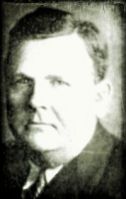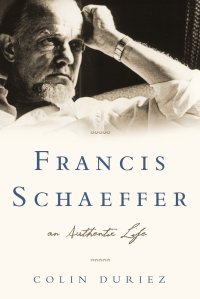
Francis Schaeffer loved the Beatles’ music and his son said:
My father’s favorite contemporary music was Bob Dylan songs and later Beatles’ SERGEANT PEPPER’S which he listened to ENDLESSLY and DISCUSSED AVIDLY and sang along with in his terrible off-key voice upon occasion.
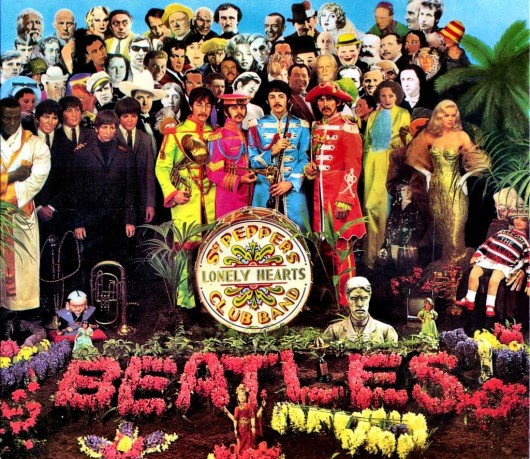
When I’m Sixty-Four- The Beatles
The Beatles first radio interview (10/27/1962)
The Beatles (John Lennon, Paul McCartney, George Harrison and Ringo Starr) with Monty Lister at their first radio interview, 27 October 1962. Before their fourth and final live appearance at the Hulme Hall in Birkenhead, The Beatles recorded a radio interview for Radio Clatterbridge. It’s the first surviving spoken-word interview.

Francis Schaeffer holding up the album Sergeant Pepper’s Lonely Hearts Club Band below in his film series HOW SHOULD WE THEN LIVE?

What are some of the main points made by Schaeffer concerning the Beatles? I hope to answer that today in a different way. I wanted to try and relate the points that Schaeffer made concerning the Beatles and relate them to our culture today. Furthermore, I wanted to take some of these same points that Schaeffer has made and show how this message could be used to relate to other people and tell them about Christ. Relating to the culture and then showing how the Biblical Worldview applies was Francis Schaeffer’s specialty. Maybe the fact that it was so apparent that the Beatles were searching for the meaning in life in so many places was the main reason that Schaeffer spent so much time analyzing them or maybe part of the reason was Schaeffer just loved their music! In the review of the Book “Sham Pearls For Real Swine” FRANKY SCHAEFFER BY AND OTHERS ⋅ NOVEMBER 25, 2004, Franky Schaeffer is quoted as saying:
My parents [Francis and Edith Schaeffer] protected me as best they could, not from art or hard questions, but from mediocrity. That is why we had so few contemnporary or fundamentalist books in the house. … That is why my parents never played contemporary Christian music of the gospel variety. … My father’s favourite contemporary music was Bob Dylan songs like “Route 66″ and later the Beatles’ “Sergeant Pepper’s” which he listened to endlessly and discussed avidly and sang along with in his terrible off-key voice upon occasion. p.8
I have dedicated several posts to this series on the Beatles and I don’t know when this series will end because Francis Schaeffer spent a lot of time listening to the Beatles and talking and writing about them and their impact on the culture of the 1960’s. In this series we have looked at several areas in life where the Beatles looked for meaning and hope but also we have examined some of the lives of those writers, artists, poets, painters, scientists, athletes, models, actors, religious leaders, musicians, comedians, and philosophers that were put on the cover of Sergeant Pepper’s Lonely Hearts Club Band album. We have discovered that many of these individuals on the cover have even taken a Kierkegaardian leap into the area of nonreason in order to find meaning for their lives and that is the reason I have included the 27 minute episode THE AGE OF NONREASON by Francis Schaeffer. In that video Schaeffer noted, ” Sergeant Pepper’s Lonely Hearts Club Band…for a time it became the rallying cry for young people throughout the world.”
One of those young people who joined in that “rallying cry for young people throughout the world” was Carolyn Porco.
________________
Uploaded on Dec 4, 2006
At the Beyond Belief conference, astronomer Carolyn Porco describes the spirituality inherent in the scientific view of the Universe.
________________
 |
Dr. Carolyn Porco is the leader of the Cassini Imaging Science team and the Director of the Cassini Imaging Central Laboratory for Operations (CICLOPS) at the Space Science Institute in Boulder,
_______
Wikipedia notes Carolyn C. Porco (born March 6, 1953) is an American planetary scientist known for her work in the exploration of the outer solar system, beginning with her imaging work on the Voyager missions to Jupiter,Saturn, Uranus, and Neptune in the 1980s. She leads the imaging science team on the Cassini mission currently in orbit around Saturn.[1] She is also an imaging scientist on the New Horizons[2] mission launched to Pluto on January 19, 2006. She is an expert on planetary rings and the Saturnian moon, Enceladus…
A frequent public speaker, Porco has given two popular lectures at TED[8][9] as well as the opening speech for Pangea Day, a May 2008 global broadcast coordinated from six cities around the world, in which she described the cosmic context for human existence.[10] Porco has also won a number of awards and honors for her contributions to science and the public sphere; for instance, in 2009, New Statesman named her as one of ‘The 50 People Who Matter Today.’[11] In 2010 she was awarded the Carl Sagan Medal, presented by the American Astronomical Society for Excellence in the Communication of Science to the Public.[12] And in 2012, she was named one of the 25 most influential people in space by Time magazine.[13]
Public speaking[edit]
Porco speaks frequently on the Cassini mission and planetary exploration in general, and has appeared at renowned conferences such as PopTech 2005[32] and TED (2007, 2009).[8][9] She attended and was a speaker at the Beyond Belief symposium on November 2006.[33][34]
Porco’s 2007 TED talk, “The Human Journey,” detailed two major areas of discovery made by the Cassini mission: the exploration of the Saturnian moons Titan and Enceladus. In her introductory remarks, Porco explained:
So the journey back to Saturn is really part of, and is also a metaphor for, a much larger human voyage.
In describing the environment of Titan, with its molecular nitrogen atmosphere suffused with organic compounds, Porco invited her audience to imagine the scene on the moon’s surface:
Stop and think for a minute. Try to imagine what the surface of Titan might look like. It’s dark: high noon on Titan is as dark as deep Earth twilight on the Earth. It’s cold, it’s eerie, it’s misty, it might be raining, and you are standing on the shores of Lake Michigan brimming with paint thinner.
That is the view that we had of the surface of Titan before we got there with Cassini. And I can tell you that what we have found on Titan, though not the same in detail, is every bit as fascinating as that story is, and for us, for Cassini people, it has been like a Jules Verne adventure come true.
After describing various features discovered on Titan by Cassini, and presenting the historic first photograph of Titan’s surface by the Huygens lander, Porco went on to describe Enceladus and the jets of “fine icy particles” which erupt from the moon’s southern pole:
…we have arrived at the conclusion that these jets may, they may, be erupting from pockets of liquid water near, under the surface of Enceladus. So we have, possibly, liquid water, organic materials and excess heat. In other words we have possibly stumbled upon the holy grail of modern-day planetary exploration, or in other words an environment that is potentially suitable for living organisms. And I don’t think I need to tell you that the discovery of life elsewhere in our Solar system, whether it be on Enceladus or elsewhere, would have enormous cultural and scientific implications. Because if we could demonstrate that genesis had occurred – not once but twice, independently, in our Solar system – then that means by inference it has occurred a staggering number of times throughout our Universe in its 13.7 billion year history.
_______________
Porco is fascinated by the 1960s and The Beatles and has, at times, incorporated references to The Beatles and their music into her presentations, writings, and press releases. The first color image released by Cassini to the public was an image of Jupiter, taken during Cassini’s approach to the giant planet and released on October 9, 2000 to honor John Lennon’s 60th birthday.[59] In 2006, she produced and directed a brief 8-minute movie of 64 of Cassini’s most spectacular images,[60] put to the music of the Beatles, in honor of Paul McCartney’s 64th birthday. And in 2007, she produced a poster showing 64 scenes from Saturn.[61][62]
Porco is also interested in dance and fascinated with Michael Jackson. In August 2010, she won a Michael Jackson costume/dance contest held in Boulder, Colorado.[63]
Quotes of Porco’s were used in the production of “The Poetry of Reality (An Anthem for Science)”, “A Wave of Reason”, “Children of Africa (The Story of Us)”, and “Onward to the Edge!” by Symphony of Science.

Carolyn (at right) re-enacting the famous Beatles photograph at Abbey Road with the other members of the Cassini Imaging Team.

________________
______________________________
I grew up at Bellevue Baptist Church under the leadership of our pastor Adrian Rogers and I read many books by the Evangelical Philosopher Francis Schaeffer and have had the opportunity to contact many of the evolutionists or humanistic academics that they have mentioned in their works. Many of these scholars have taken the time to respond back to me in the last 20 years and some of the names included are Ernest Mayr (1904-2005), George Wald (1906-1997), Carl Sagan (1934-1996), Robert Shapiro (1935-2011), Nicolaas Bloembergen (1920-), Brian Charlesworth (1945-), Francisco J. Ayala (1934-) Elliott Sober (1948-), Kevin Padian (1951-), Matt Cartmill (1943-) , Milton Fingerman (1928-), John J. Shea (1969-), , Michael A. Crawford (1938-), Paul Kurtz (1925-2012), Sol Gordon (1923-2008), Albert Ellis (1913-2007), Barbara Marie Tabler (1915-1996), Renate Vambery (1916-2005), Archie J. Bahm (1907-1996), Aron S “Gil” Martin ( 1910-1997), Matthew I. Spetter (1921-2012), H. J. Eysenck (1916-1997), Robert L. Erdmann (1929-2006), Mary Morain (1911-1999), Lloyd Morain (1917-2010), Warren Allen Smith (1921-), Bette Chambers (1930-), Gordon Stein (1941-1996) , Milton Friedman (1912-2006), John Hospers (1918-2011), Michael Martin (1932-), John R. Cole (1942-), Wolf Roder, Susan Blackmore (1951-), Christopher C. French (1956-) Walter R. Rowe, Thomas Gilovich (1954-), Paul Quincey, Harry Kroto (1939-), Marty E. Martin (1928-), Richard Rubenstein (1924-), James Terry McCollum (1936-), Edward O. WIlson (1929-), Lewis Wolpert (1929), Gerald Holton (1922-), Martin Rees (1942-), Alan Macfarlane (1941-), Roald Hoffmann (1937-), Herbert Kroemer (1928-), Thomas H. Jukes (1906-1999), Glenn Branch, Geoff Harcourt (1931-) and Ray T. Cragun (1976-).
_________
HERE IS A QUOTE FROM Dr. Porco AT THE BEYOND BELIEF CONFERENCE:
“It seemed to me, if there were any answers to be found at all, they were going to be found in the facts, and understanding the greater theater in which human life has unfolded. And I was right about that. Being a scientist, and staring immensity and eternity in the face every day is about as meaningful I think, and grand and awe-inspiring as it gets. We, especially we astronomers, confront the big questions of wonder every day and the answers to these questions in the aggregate have produced, and this is absolutely with no hype,…the greatest story every told. And there isn’t a religion, I think, that can offer anything better. And as Jules Verne said, reality provides us with facts so romantic that imagination itself could add nothing to them.”
Below is a letter I recently wrote to Dr. Porco challenging her views on evolution while including a lot of details about her favorite rock group.
________________________________
Francis Schaeffer 1912-1984

__________
March 26, 2015
Dear Dr. Porco,
YOU HAVE SAID that religions use the conceptional device “that people need to feel connected to something greater than they are and this is the idea that God is omnipotent, omniscient and immortal and He made me in his image and through that connection to find meaning and purpose and ultimately to find they too will be immortal and the issue is that people fear death. I THINK THE SAME SPIRITUAL FULFILLMENT THAT PEOPLE FIND IN RELIGION CAN BE FOUND IN SCIENCE.”
There are many ways to respond to that but I am going to do it in a very lengthy but entertainingly way I hope. I read a lot of your material and wanted to talk to about two passions in your life. Francis Schaeffer talked about the views of the Beatles and Charles Darwin a lot and since you have taken an interest in music and science I thought you would be interested in these thoughts of Schaeffer. Another interesting thing about Charles Darwin is that he left the Christian faith of his youth just like you did.
Francis Schaeffer’s son Frank wrote recently about the impact of SGT. PEPPER’S LONELY HEARTS CLUB BAND:
“Sgt. Pepper’s” became my personal sound track of liberation back then…Genie, my wife of 44 years… grew up in the Bay Area and as a teen had the distinction of seeing the Beatles three times (!) live and the Rolling Stones four times (!) live.
Meanwhile, I was growing up in Switzerland in a mission (L’Abri Fellowship), and my “almost famous” rock-n-roll high point came when I got a job helping with the Led Zeppelin’s light show at the Montreux Jazz/rock festival. I met Jimmy Page and noticed he was reading one of my dad’s first books, ESCAPE FROM REASON. (No kidding.)
This was back in the days when Dad was a sort of hippie guru for Jesus catering to Beats, hippies and dropouts hitching across Europe. Eric Clapton had given Page the book as it turned out. I was trying to be “cool” that day on the light show crew… and I wasn’t too pleased to find my brief escape into the rock world from the world of my Dad’s evangelical mission was no escape from my God-world at all. He’d been giving lectures on Bob Dylan, and drug guru Timothy Leary had been a guest at L’Abri. And now I got to briefly “hang out with the band” and Dad got there first, or at least one of his books did! Sheesh! It’s hard to be cool!
Jimmy Page with Paul MacCartney

__________
John Lennon, Eric Clapton, Keith Richards, Mitch Mitchell, Jimi Hendrix
John Lennon (Beatles), Eric Clapton (Cream), Keith Richards (Rolling Stones), Mitch Mitchell (Jimi Hendrix Experience) – Yer Blues
Jimmy Page and Eric Clapton back together again

___________________________________
Peter Blake artist behind cover

_______________
_________
NOT MANY PEOPLE HAVE THOUGHT ABOUT THE FACT THAT THE PICTURE ON THE COVER OF SGT. PEPPER’S LONELY HEARTS CLUB BAND IS THE BEATLES’ GRAVE SITE. In the article Philosophy and its Effect on Society, Robert A. Sungenis (who was a personal friend of Schaeffer) tells us:
On the front cover are all the famous “Lonely Hearts” of the world who also could not find answers to life with reason and rationality, resorting to the existential leap into the dark (e.g ., Marlene Dietrich, Carl Jung, W.C. Fields, Bob Dylan, Marilyn Monroe, Sigmund Freud, Aleister Crowley, Edgar Allan Poe, Karl Marx, Oscar Wilde, Marlon Brando, Stan Laurel and Oliver Hardy, Lenny Bruce). They are all viewing the burial scene of the Beatles, which, in the framework we are using here, represents the passing of idealistic innocence and the failure to find a rational answer and meaning to life, an answer to love, purpose, significance and morals. They instead were leaping into the irrational, whether it was by drugs, the occult, suicide, or the bizarre.
William Lane Craig observed that BERTRAND RUSSELL wrote that we must build our lives upon “the firm foundation of unyielding despair.” and also that Francis Schaeffer noted:
Modern man resides in a two-story universe. In the lower story is the finite world without God; here life is absurd, as we have seen. In the upper story are meaning, value, and purpose. Now modern man lives in the lower story because he believes there is no God. But he cannot live happily in such an absurd world; therefore, he continually makes leaps of faith into the upper story to affirm meaning, value, and purpose, even though he has no right to, since he does not believe in God. Modern man is totally inconsistent when he makes this leap, because these values cannot exist without God, and man in his lower story does not have God.
___________
___________
Charles Darwin had a very interesting reaction late in his life to the possibility that we live in an absurd universe and that was he blamed science for causing him to lose his aesthetic tastes and I read that in his biography ( Charles Darwin: his life told in an autobiographical chapter, and in a selected series of his published letters.). I am going to quote some of Charles Darwin’s own words and then include the comments of Francis Schaeffer on those words. I have also enclosed a CD with two messages from Adrian Rogers and Bill Elliff concerning Darwinism.
CHARLES DARWIN’S AUTOBIOGRAPHY. Addendum. Written May 1st, 1881 [the year before his death].
“I have said that in one respect my mind has changed during the last twenty or thirty years. Up to the age of thirty, or beyond it, poetry of many kinds, such as the works of Milton, Gray, Byron, Wordsworth, Coleridge, and Shelley, gave me great pleasure, I have also said that formerly pictures gave me considerable, and music very great delight. But now for many years I cannot endure to read a line of poetry: I have tried lately to read Shakespeare, and found it so intolerably dull that it nauseated me. I have also almost lost my taste for pictures or music. Music generally sets me thinking too energetically on what I have been at work on, instead of giving me pleasure. I retain some taste for fine scenery, but it does not cause me the exquisite delight which it formerly did….My mind seems to have become a kind of machine for grinding general laws out of large collections of facts, but why this should have caused the atrophy of that part of the brain alone, on which the higher tastes depend, I cannot conceive….The loss of these tastes is a loss of happiness, and may possibly be injurious to the intellect, and more probably to the moral character, by enfeebling the emotional part of our nature.”
Francis Schaeffer commented:
This is the old man Darwin writing at the end of his life. What he is saying here is the further he has gone on with his studies the more he has seen himself reduced to a machine as far as aesthetic things are concerned. I think this is crucial because as we go through this we find that his struggles and my sincere conviction is that he never came to the logical conclusion of his own position, but he nevertheless in the death of the higher qualities as he calls them, art, music, poetry, and so on, what he had happen to him was his own theory was producing this in his own self just as his theories a hundred years later have produced this in our culture.
Unlike Darwin many people today still hang on to their love of music and the arts. Schaeffer points out in his book The God Who Is There, pages 68-69, “The very ‘mannishness’ of man refuses to live in the logic of the position to which his humanism and rationalism have brought him. To say that I am only a machine is one thing; to live consistently as if this were true is quite another…Every truly modern man is forced to accept some sort of leap in theory or practice, because the pressure of his own humanity demands it. He can say what he will concerning what he himself is; but no matter what he says he is, he is still a man.”
YOU SAID that “I think we can replace the God concept…it is just a matter of developing a socially appealing way to get the word out to everybody. That brings me to religion and whether or not if anything doing with scientific inquiry could ever offer the social embrace that religious organizations do.” At this point you suggested showing the young people what “Awe and Wonder” knowledge of the universe can give. That reminds me of this next letter from Charles Darwin.
Charles Darwin pictured below:

_____
Francis Schaeffer noted that in Darwin’s 1876 Autobiography that Darwin he is going to set forth two arguments for God in this and again you will find when he comes to the end of this that he is in tremendous tension. Darwin wrote,
“At the present day the most usual argument for the existence of an intelligent God is drawn from the deep inward conviction and feelings which are experienced by most persons.Formerly I was led by feelings such as those just referred to, …to the firm conviction of the existence of God and of the immortality of the soul. In my Journal I wrote that whilst standing in the midst of the grandeur of a Brazilian forest, ‘it is not possible to give an adequate idea of the higher feelings of wonder, admiration, and devotion which fill and elevate the mind.’ I well remember my conviction that there is more in man than the mere breath of his body; but now the grandest scenes would not cause any such convictions and feelings to rise in my mind. It may be truly said that I am like a man who has become COLOUR-BLIND.”
Francis Schaeffer remarked:
Now Darwin says when I look back and when I look at nature I came to the conclusion that man can not be just a fly! But now Darwin has moved from being a younger man to an older man and he has allowed his presuppositions to enter in to block his logic, these things at the end of his life he had no intellectual answer for. To block them out in favor of his theory. Remember the letter of his that said he had lost all aesthetic senses when he had got older and he had become a clod himself. Now interesting he says just the same thing, but not in relation to the arts, namely music, pictures, etc, but to nature itself. Darwin said, “But now the grandest scenes would not cause any such convictions and feelings to rise in my mind. It may be truly said that I am like a man who has become colour-blind…” So now you see that Darwin‘s presuppositions have not only robbed him of the beauty of man’s creation in art, but now the universe. He can’t look at it now and see the beauty. The reason he can’t see the beauty is for a very, very , very simple reason: THE BEAUTY DRIVES HIM TO DISTRACTION. THIS IS WHERE MODERN MAN IS AND IT IS HELL. The art is hell because it reminds him of man and how great man is, and where does it fit in his system? It doesn’t. When he looks at nature and it’s beauty he is driven to the same distraction and so consequently you find what has built up inside him is a real death, not only the beauty of the artistic but the beauty of nature. He has no answer in his logic and he is left in tension. He dies and has become less than human because these two great things (such as any kind of art and the beauty of nature) that would make him human stand against his theory.
Schaeffer later asserted, “We cannot deal with people like human beings, we cannot deal with them on the high level of true humanity, unless we really know their origin-who they are. God tells man who he is. God tells us that He created man in His image. So man is something wonderful.” ( Escape from Reason: A Penetrating Analysis of Trends in Modern Thought )
Many young people turned to Eastern Religions in the 1960’s and 1970’s. Francis Schaeffer asserted, “But this finally brings them to the place where the word GOD merely becomes the word GOD, and no certain content can be put into it. In this many of the established theologians are in the same position as George Harrison (1943-) (the former Beatles guitarist) when he wrote MY SWEET LORD (1970). Many people thought he had come to Christianity. But listen to the words in the background: “Krishna, Krishna, Krishna.” Krishna is one Hindu name for God. This song expressed no content, just a feeling of religious experience. To Harrison, the words were equal: Christ or Krishna. Actually, neither the word used nor its content was of importance,” HOW SHOULD WE THEN LIVE? (page 191 Vol 5).
________
In the film series HOW SHOULD WE THEN LIVE? Francis Schaeffer shows the Beatles visiting Maharishi Mahesh Yogi in India.

Within You Without You- The Beatles
Within You Without You
The Beatles
Sgt. Pepper’s
We were talking-about the space between us all
And the people-who hide themselves behind a wall of illusion
Never glimpse the truth-then it’s far too late-when they pass away.
We were talking-about the love we all could share-when we find it
To try our best to hold it there-with our love
With our love-we could save the world-if they only knew.
Try to realise it’s all within yourself
No-one else can make you change
And to see you’re really only very small,
And life flows within you and without you.
We were talking-about the love that’s gone so cold and the people,
Who gain the world and lose their soul-
They don’t know-they can’t see-are you one of them?
When you’ve seen beyond yourself-then you may find, peace of mind,
Is waiting there-
And the time will come when you see
we’re all one, and life flows on within you and without you
Patti Boyd wedding ceremony with George Harrison:
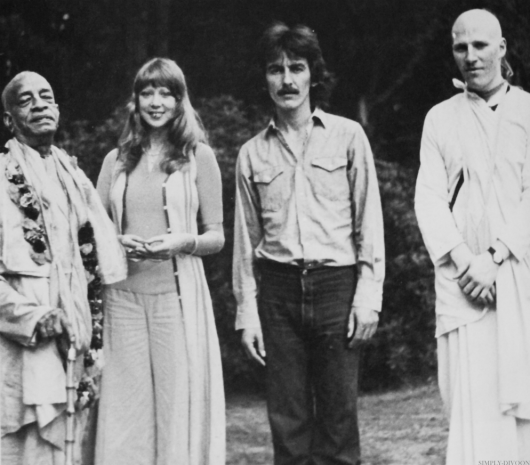
However, this is not the personal God that Christians worship. Darwin only had a problem with the idea of a personal God. In 1879 Charles Darwin was applied to by a German student, in a similar manner. The letter was answered by a member of Darwin’s family, who wrote:–
“Mr. Darwin…considers that the theory of Evolution is quite compatible with the belief in a God; but that you must remember that different persons have different definitions of what they mean by God.”
Francis Schaeffer commented:
You find a great confusion in Darwin‘s writings although there is a general structure in them. Here he says the word “God” is alright but you find later what he doesn’t take is a personal God. Of course, what you open is the whole modern linguistics concerning the word “God.” is God a pantheistic God? What kind of God is God? Darwin says there is nothing incompatible with the word “God.”

_____________
Besides looking to Eastern Religions the Beatles tried to escape from reason by turning to drugs. In the book HOW SHOULD WE THEN LIVE?, Schaeffer observed, “This emphasis on hallucinogenic drugs brought with it many rock groups–for example, Cream, Jefferson Airplane, Grateful Dead, Incredible String Band, Pink Floyd, and Jimi Hendrix. Most of their work was from 1965-1968. The Beatles’ SERGEANT PEPPER’S LONELY HEART S CLUB BAND (1967) also fits here. This disc is a total unity, not just an isolated series of individual songs, and for a time it became the rallying cry for young people throughout the world. As a whole, this music was the vehicle to carry the drug culture and the mentality which went with it across frontiers which were almost impassible by other means of communication.”

_________________________________
The Cover of Sergeant Pepper’s :

__________
In his recent article, “Lucy in the Mind of Lennon: An Empirical Analysis of Lucy in the Sky with Diamonds,
When the Beatles released their album Sgt. Pepper’s Lonely Hearts Club Band in the late spring of 1967,fans and critics alike were quick to find references to drugs throughout the LP. The album’s deliriously decorated jacket featured marijuana plants in the garden behind which the Beatles stood. The lyrics of With a Little Help from My Friends, Lovely Rita, and A Day in the Life all referred to marijuana, mentioning getting “high” and taking “some tea,” as well a desire to “turn you on.” And tuned-in listeners easily connected the feelings, sensations, and visions people typically experience while on hallucinogenic drugs to the dreamlike imagery of Lucy in the Sky with Diamonds. Some clever listeners even pointed out that the song’s title shares the initials of the hallucinogen LSD (lysergic acid diethylamide).
The Beatles had no doubt contributed to the perception that Sgt. Pepper was indeed a piece of hippie propaganda for hallucinogenic partying. Around the time the album was released, Paul McCartney revealed in a Life magazine interview that he had been using marijuana and LSD. McCartney even went on to extol the virtues of LSD, claiming that it had brought him closer to God and would yield world peace if only politicians would try it. Soon after, John Lennon, George Harrison, and the Beatles’ manager Brian Epstein also admitted that they had used LSD. Later that summer, the Beatles endorsed the legalization of marijuana by signing their names to a full-page advertisement in the London Times.
Despite these public proclamations about his drug use, John Lennon steadfastly denied that Lucy in the Sky with Diamonds was about drugs. Lennon instead consistently claimed that the song was a response to a picture painted by his almost four-year-old son Julian. The oft-repeated story goes that Julian had brought the picture home from school and told his father that it was of his friend, Lucy, who was up in the sky with diamonds. Lennon’s mind had then wandered toward the Lewis Carroll books Alice in Wonderland and Through the Looking-Glass that he had long admired and recently been re-reading. Lucy in the Sky with Diamonds was born when Lennon took images from Julian’s picture and combined them with elements of Carroll’s stories and poems.
A third explanation for the song’s meaning and origin was provided by Lennon many years after it was written, just a few weeks before he was killed. While reflecting on each of the songs in his discography, Lennon said this about Lucy in the Sky with Diamonds:
“There was also the image of the female who would someday come save me—a “girl with kaleidoscope eyes” who would come out of the sky. It turned out to be Yoko, though I hadn’t met Yoko yet. . . . The imagery was Alice in the boat. And also the image of this female who would come and save me—this secret love that was going to come one day. So it turned out to be Yoko, though, and I hadn’t met Yoko then. But she was my imaginary girl that we all have.”
Despite the fact that some people do not think that LUCY IN THE SKY WITH DIAMONDS was about drugs, the fact remains that it was probably considered so through the years by most drug users!!!!!!
_________________

________

Tara Browne in 1966
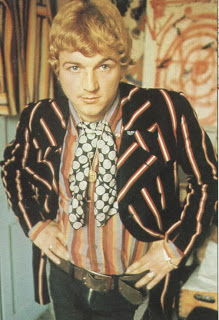
Suki Poitier (centre) and Tara Browne (right), 1966

_________________
The Beatles documentary || A Long and Winding Road || Episode 5 (This video discusses Stg. Pepper’s creation
SERGEANT PEPPER’S LONELY HEART S CLUB BAND not only dealt with drugs but also with death. In the TELEGRAPH in Nicky Browne’s obit it was noted that “Paul McCartney told interviewers that he took LSD for the first time with Tara Browne.” Wikipedia records, “The Honourable Tara Browne (4 March 1945 – 18 December 1966) was a young London socialite and heir to the Guinness fortune and was the son of Dominick Browne, 4th Baron Oranmore and Browne, a member of the House of Lords since 1927 who later became famous for having served in that house longer than any other peer…According to some sources, Tara was the inspiration for the Beatles song “A Day in the Life“. He sat in on the making of the Beatles record ‘Revolver’.
On 17 January 1967 John Lennon, a friend of Browne’s, was composing music at his piano whilst idly reading London’s Daily Mail and happened upon the news of the coroner’s verdict into Browne’s death. He worked the story into the song “A Day in the Life“, later released on the album Sgt. Pepper’s Lonely Hearts Club Band. The second verse features the following lines:
He blew his mind out in a car, He didn’t notice that the lights had changed, A crowd of people stood and stared, They’d seen his face before, Nobody was really sure, If he was from the House of Lords.
According to Lennon, in his 1980 interview with Playboy magazine, “I was reading the paper one day and I noticed two stories. One was the Guinness heir who killed himself in a car. That was the main headline story. He died in London in a car crash.”
_____________
Samuel Beckett was the Nobel Prize Winner in Literature in 1969

________________
A side note about Tara Browne is that in Paris his social circle was the likes of Samuel Beckett, Salvador Dali, and Jean Cocteau. Samuel Beckett had a lot to say on this issue of man’s significance as William Lane Craig has noted:
If each individual person passes out of existence when he dies, then what ultimate meaning can be given to his life? Does it really matter whether he ever existed at all? It might be said that his life was important because it influenced others or affected the course of history. But this shows only a relative significance to his life, not an ultimate significance. His life may be important relative to certain other events, but what is the ultimate significance of any of those events? If all the events are meaningless, then what can be the ultimate significance of influencing any of them? Ultimately it makes no difference.
This is the horror of modern man: because he ends in nothing, he is nothing.
Twentieth-century man came to understand this. Read WAITING FOR GODOT by Samuel Beckett. During this entire play two men carry on trivial conversation while waiting for a third man to arrive, who never does. Our lives are like that, BECKETT IS SAYING: WE JUST KILL TIME WAITING–FOR WHAT, WE DON’T KNOW. In a tragic portrayal of man, Beckett wrote another play in which the curtain opens revealing a stage littered with junk. For thirty long seconds, the audience sits and stares in silence at that junk. Then the curtain closes. That’s all.
French existentialists Jean-Paul Sartre and Albert Camus understood this, too. Sartre portrayed life in his play No Exit as hell—the final line of the play are the words of resignation, “Well, let’s get on with it.” Hence, Sartre writes elsewhere of the “nausea” of existence. Man, he says, is adrift in a boat without a rudder on an endless sea. Camus, too, saw life as absurd. At the end of his brief novel The Stranger, Camus’s hero discovers in a flash of insight that the universe has no meaning and there is no God to give it one. The French biochemist Jacques Monod seemed to echo those sentiments when he wrote in his work Chance and Necessity, “Man finally knows he is alone in the indifferent immensity of the universe.”
Thus, if there is no God, then life itself becomes meaningless. Man and the universe are without ultimate significance.
IN LIGHT OF THESE STATEMENTS BY SARTRE, CAMUS, BECKETT, and MONAD HOW CAN YOU STILL ASSERT THE FOLLOWING:
“It is possible to regard death as a natural event and even perhaps a wondrous state that takes place in the wonderful story in what we see around us in the universe. That can be taught to be a comforting thought. We know exactly what it is like to be dead because it is exactly the same state we were in before we were born.”
IN SPITE OF ALL THIS MANY SECULARISTS HAVE ADOPTED WHAT I CALL “EVOLUTIONARY OPTIMISTIC HUMANISM” and even in the 19th century Charles Darwin in his autobiography was touting THE SAME PRODUCT AS I SEE YOU ARE TODAY!!!
HERE IS A QUOTE FROM YOUR LIPS AT THE BEYOND BELIEF CONFERENCE:
“It seemed to me, if there were any answers to be found at all, they were going to be found in the facts, and understanding the greater theater in which human life has unfolded. And I was right about that. Being a scientist, and staring immensity and eternity in the face every day is about as meaningful I think, and grand and awe-inspiring as it gets. We, especially we astronomers, confront the big questions of wonder every day and the answers to these questions in the aggregate have produced, and this is absolutely with no hype,…the greatest story every told. And there isn’t a religion, I think, that can offer anything better. And as Jules Verne said, reality provides us with facts so romantic that imagination itself could add nothing to them.”
YOUR QUOTE DEMONSTRATES WHAT I CALL “OPTIMISTIC HUMANISM.” It is truly a “romantic” point of view of secularism.
“Believing as I do that man in the distant future will be a far more perfect creature than he now is,”
FRANCIS SCHAEFFER COMMENTED:
Now you have now the birth of Julian Huxley’s evolutionary optimistic humanism already stated by Darwin. Darwin now has a theory that man is going to be better. If you had lived at 1860 or 1890 and you said to Darwin, “By 1970 will man be better?” He certainly would have the hope that man would be better as Julian Huxley does today. Of course, I wonder what he would say if he lived in our day and saw what has been made of his own views in the direction of (the mass murder) Richard Speck (and deterministic thinking of today’s philosophers). I wonder what he would say. So you have the factor, already the dilemma in Darwin that I pointed out in Julian Huxley and that is evolutionary optimistic humanism rests always on tomorrow. You never have an argument from the present or the past for evolutionary optimistic humanism.
You can have evolutionary nihilism on the basis of the present and the past. Every time you have someone bringing in evolutionary optimistic humanism it is always based on what is going to be produced tomorrow. When is it coming? The years pass and is it coming? Arthur Koestler doesn’t think it is coming. He sees lots of problems here and puts forth for another solution.
WHAT EVOLUTIONISTS LIKE YOURSELF ARE LEFT WITH IS ONLY THE HOPE OF “biological continuity and increased biological complexity” AS DARWIN AND SCHAEFFER POINT OUT BELOW. YOU HAVE SAID CONCERNING “Enceladus, “That was tremendously exciting to find, because not only do we think there’s liquid water there, not only is there an enormous amount of excess heat, but we also have organic materials. That, I mean, that is the trifecta that we’re looking for, the three main ingredients for a habitable zone.”
Why are you searching so hard for intelligent life? The answer is pretty clear. We were created in God’s image and we will feel empty until we reunite with him. YOU SAID IT YOURSELF AND I QUOTED IT IN THIS LETTER ALREADY and that is you as a secularist are competing with this view that God created in his own image for a special purpose. The message of the movie CONTACT is basically about mankind trying to reach out to other beings so we can ask them the big questions. The scientist Blaise Pascal summarized it up best when he said, “There is a God shaped vacuum in the heart of every man which cannot be filled by any created thing, but only by God, the Creator, made known through Jesus.” Just today I heard this radio commentary from Eric Metaxas on the SETI PROGRAM.
It’s been fifty years and E.T. still hasn’t called. So maybe it’s time we give him a call? Although some don’t think that’s such a great idea.

When we step out at night and look up at the stars, we can’t help wondering: Is there someone else out there? And if there is, would these extraterrestrials be benign and curious like the musical aliens in “Close Encounters of the Third Kind,” or would they be malicious and hostile like the Klingons of “Star Trek”?
Well, ever since stargazer Frank Drake conducted his first scan of the heavens in 1960, that’s the question he and other scientists have been asking. Drake, the chairman emeritus of the Search for Extraterrestrial Intelligence or SETI, was one of the first to point a radio telescope toward space and listen for the tell-tale signals of intelligent life.
Like astronomer and “Cosmos” host Carl Sagan, Drake developed an equation for estimating the number of civilizations on other planets in our galaxy. And like Sagan’s estimates, his were astronomical: Billions of planets should have life, he reasoned, and of those, millions ought to have evolved intelligent beings. And so the researchers at SETI turned their radio dishes skyward, and listened.
Of course, as I write in my book “Miracles,” Carl Sagan (and hence Drake) got it wrong. The probability for life is astronomical all right—astronomically IM-probable, since we now know there are more than 150 absolutely-necessary and rare conditions that must be met to sustain life. So it’s no wonder that instead of a cacophony of radio signals from intelligent life somewhere out there, all we’re hearing is the silence of the stars.
But some scientists insist that just because we haven’t heard from E.T. doesn’t mean he’s not out there. So now they’re proposing a radical new strategy. It’s called “Active SETI,” and as Joel Achenbach explains in The Washington Post, its goal would be to “boldly announce our presence and try to get the conversation started.”
Rather than just listening for signals from space, scientists would beam messages at stars that they considered good candidates for life and they’d wait for potential civilizations orbiting those stars to respond. Maybe within a few hundred years, we would finally discover we aren’t alone in the universe.
But not everyone likes that idea. A petition signed by 28 influential scientists warns of the potential danger of Active SETI. They’ve seen the movie, or the movies, I should say, and they know it doesn’t end well for us earthlings. Their concern is whether these ETI’s will be benign or hostile: good point.
Frank Drake himself thinks Active SETI is a waste of time. We’ve been leaking radio signals into space since before the days of “I Love Lucy,” he points out. Anyone in our galactic neighborhood with an antenna already knows we’re here.
Hearing all of this talk of aliens, I can’t help but think of Walker Percey’s brilliant book, “Lost in the Cosmos.” In it, he observes that the more we learn about the universe, the lonelier we become. And he’s right. Even the most rational scientists have poured untold treasure, time, and talent into the hunt for extraterrestrial neighbors—with nothing to reward their efforts.
One thing we do know, we humans long to know we’re not alone. And the good news, as Christians know, is that we’re not! We aren’t “lost in the cosmos,” but we are the centerpiece of a grand plan that culminated in a visitation by Someone from beyond our universe.

In Darwin’s 1876 Autobiography he noted:
“…it is an intolerable thought that he and all other sentient beings are doomed to complete annihilation after such long-continued slow progress. To those who fully admit the immortality of the human soul, the destruction of our world will not appear so dreadful.”
Francis Schaeffer commented:
Here you feel Marcel Proust and the dust of death is on everything today because the dust of death is on everything tomorrow. Here you have the dilemma of Nevil Shute’s ON THE BEACH. If it is true that all we have left is biological continuity and increased biological complexity, which is all we have left in Darwinism here, or with many of the modern philosophers, then you can’t stand Shute’s ON THE BEACH. Maybe tomorrow at noon human life may be wiped out. Darwin already feels the tension, because if human life is going to be wiped out tomorrow, what is it worth today? Darwin can’t stand the thought of death of all men. Charlie Chaplin when he heard there was no life on Mars said, “I’m lonely.”
You think of the Swedish Opera (ANIARA) that is pictured inside a spaceship. There was a group of men and women going into outer space and they had come to another planet and the singing inside the spaceship was normal opera music. Suddenly there was a big explosion and the world had blown up and these were the last people left, the only conscious people left, and the last scene is the spaceship is off course and it will never land, but will just sail out into outer space and that is the end of the plot. They say when it was shown in Stockholm the first time, the tough Swedes with all their modern mannishness, came out (after the opera was over) with hardly a word said, just complete silence.
Darwin already with his own position says he CAN’T STAND IT!! You can say, “Why can’t you stand it?” We would say to Darwin, “You were not made for this kind of thing. Man was made in the image of God. Your CAN’T- STAND- IT- NESS is screaming at you that your position is wrong. Why can’t you listen to yourself?”
You find all he is left here is biological continuity, and thus his feeling as well as his reason now is against his own theory, yet he holds it against the conclusions of his reason. Reason doesn’t make it hard to be a Christian. Darwin shows us the other way. He is holding his position against his reason.
These words of Darwin ring in my ear, “…it is an intolerable thought that he and all other sentient beings are doomed to complete annihilation after such long-continued slow progress…” . Schaeffer rightly noted, “Maybe tomorrow at noon human life may be wiped out. Darwin already feels the tension, because if human life is going to be wiped out tomorrow, what is it worth today? Darwin can’t stand the thought of death of all men.” IN OTHER WORDS ALL WE ARE IS DUST IN THE WIND. I sent you a CD that starts off with the song DUST IN THE WIND by Kerry Livgren of the group KANSAS which was a hit song in 1978 when it rose to #6 on the charts because so many people connected with the message of the song. It included these words, “All we do, crumbles to the ground though we refuse to see, Dust in the Wind, All we are is dust in the wind, Don’t hang on, Nothing lasts forever but the Earth and Sky, It slips away, And all your money won’t another minute buy.”
Kerry Livgren himself said that he wrote the song because he saw where man was without a personal God in the picture. Solomon pointed out in the Book of Ecclesiastes that those who believe that God doesn’t exist must accept three things. FIRST, death is the end. SECOND, chance and time are the only guiding forces in this life. FINALLY, power reigns in this life and the scales are never balanced. The Christian can face death and also confront the world knowing that it is not determined by chance and time alone and finally there is a judge who will balance the scales.
_____________

Kansas, circa 1973 (Phil Ehart, Kerry Livgren, Steve Walsh, Rich Williams, Robby Steinhardt, Dave Hope) (photo credit: DON HUNSTEIN)
____________________________________________
Both Kerry Livgren and the bass player Dave Hope of Kansas became Christians eventually. Kerry Livgren first tried Eastern Religions and Dave Hope had to come out of a heavy drug addiction. I was shocked and elated to see their personal testimony on The 700 Club in 1981 and that same interview can be seen on You Tube today. Livgren lives in Topeka, Kansas today where he teaches “Diggers,” a Sunday school class at Topeka Bible Church. DAVE HOPE is the head of Worship, Evangelism and Outreach at Immanuel Anglican Church in Destin, Florida.

(Aldous Huxley, pictured above, was an English literary author who is renowned for his novel,Brave New World, which was published in 1931. Apart from writing novels, he also wrote a few travel books, poems, plays and several essays on religion, art and sociology)
HOW DID THE BEATLES SEARCH END UP AND WHY WAS ALDOUS HUXLEY PUT ON THE COVER OF “SERGEANT PEPPER’S LONELY HEART S CLUB BAND”? Below is an excerpt from Francis A. Schaeffer‘s 1972 paper on the trends seen in secular society concerning drug use:
The philosophic basis for the drug scene came from ALDOUS HUXLEY'S concept that, since, for the rationalist, reason is not taking us anywhere, we should look for a final experience, one that can be produced "on call," one that we do not need to wait for. The drug scene, in other words, was at first an ideol- ogy, an ideology that had very practical consequences. Some of us at L'Abri have cried over the young people who have blown their minds. But many of them thought, like Alan Watts, Gary Snyder, Alan Ginsberg and Timothy Leary, that if you could simply turn everyone on, there would be an answer to man's longings. It wasn't just the far-out freaks who suggested that you could put drugs in the drinking water and turn on a whole city so that the "pigs" and the kids would all have flowers in their hair. In those days it really was an optimistic ideological concept...
The Beatles are a sort of test case. First they were just a rock group, then they took to drugs and expressed that in such songs as Sergeant Pepper's Lonely Hearts Club Band. When drugs didn't pan out, when they saw what was happening in Haight-Ashbury, they turned to the psychedelic sounds of Straivberry Fields, and then went further into Eastern religious experiences. But that, too, did not work out, and they wound up their career as a group by making The Yellow Submarine. When they made this movie, some people said, "The Beatles are coming back." But of course that was not the case. It was really 'the sad end of their ideological search as a group. It's interesting that Erich Segal, the man who wrote the film script for THE YELLOW SUBMARINE, then wrote LOVE STORY.
The answer to find meaning in life is found in putting your faith and trust in Jesus Christ. The Bible is true from cover to cover and can be trusted.
Thank you again for your time and I know how busy you are.
Everette Hatcher, everettehatcher@gmail.com, http://www.thedailyhatch.org, cell ph 501-920-5733, Box 23416, LittleRock, AR 72221, United States
_________________
You can hear DAVE HOPE and Kerry Livgren’s stories from this youtube link:
(part 1 ten minutes)
(part 2 ten minutes)

Kansas – Dust in the Wind (Official Video)
Pre-Order Miracles Out of Nowhere now at http://www.miraclesoutofnowhere.com
About the film:
In 1973, six guys in a local band from America’s heartland began a journey that surpassed even their own wildest expectations, by achieving worldwide superstardom… watch the story unfold as the incredible story of the band KANSAS is told for the first time in the DVD Miracles Out of Nowhere.
___________________
Strawberry Fields Forever is not only mentioned by Schaeffer above but also in this article below.

By Elvis Costello
My absolute favorite albums are Rubber Soul and Revolver. On both records you can hear references to other music — R&B, Dylan, psychedelia — but it’s not done in a way that is obvious or dates the records. When you picked up Revolver, you knew it was something different. Heck, they are wearing sunglasses indoors in the picture on the back of the cover and not even looking at the camera . . . and the music was so strange and yet so vivid. If I had to pick a favorite song from those albums, it would be “And Your Bird Can Sing” . . . no, “Girl” . . . no, “For No One” . . . and so on, and so on. . . .
Their breakup album, Let It Be, contains songs both gorgeous and jagged. I suppose ambition and human frailty creeps into every group, but they delivered some incredible performances. I remember going to Leicester Square and seeing the film of Let It Be in 1970. I left with a melancholy feeling.
beatles – in my life
beatles former wives/girlfriends
this is my first video, thanks for watching,please comment 😉
5
‘In My Life’

Writers: Lennon-McCartney
Recorded: October 18 and 22, 1965
Released: December 6, 1965
Not released as a single
‘In My Life” represented a crucial breakthrough for John Lennon — as well as a creative struggle. The song began with a question: During a March 1964 interview with Lennon, journalist Kenneth Allsop asked why he hadn’t written more lyrics about his life and experiences. “I had a sort of professional songwriter’s attitude to writing pop songs,” Lennon said to Rolling Stone in 1970. “I would write [books like] In His Own Write, to express my personal emotions. I’d have a separate songwriting John Lennon who wrote songs for the meat market. I didn’t consider them to have any depth at all. They were just a joke.”
Taking Allsop’s critique to heart, Lennon wrote a long poem about people and places from his past, touching on Liverpool landmarks like Penny Lane, Strawberry Field and Menlove Avenue. “I had a complete set of lyrics after struggling with a journalistic version of a trip downtown on a bus, naming every sight,” he said. When he read the poem later, though, “it was the most boring ‘What I Did on My Holidays’ song, and it wasn’t working. But then I laid back, and these lyrics started coming to me about the places I remember.”
What happened next is a dispute that will never be resolved. “In My Life” is one of only a handful of Lennon-McCartney songs where the two strongly disagreed over who wrote what: According to Lennon, “The whole lyrics were already written before Paul even heard it. His contribution melodically was the harmony and the middle eight.” According to McCartney, Lennon basically had the first verse done. At one of their writing sessions at Lennon’s Weybridge estate, the two painstakingly rewrote the lyrics, making them less specific and more universal. (Some of Lennon’s lines, like his reference to the late Stu Sutcliffe, the Beatles’ former bassist, in “some are dead and some are living,” remained.) McCartney also says he wrote the melody on Lennon’s Mellotron, inspired by Smokey Robinson, as well as the gentle opening guitar figure.
Regardless of its true authorship, “In My Life” represented Lennon’s evolution as an artist. “I started being me about the songs, not writing them objectively, but subjectively,” Lennon said. “I think it was Dylan who helped me realize that — not by any discussion or anything, but by hearing his work.” The Beatles were huge Dylan fans by early 1964, playingThe Freewheelin’ Bob Dylan nonstop in between gigs. When Dylan visited the Beatles in New York that August, he famously introduced them to marijuana. (He thought the Beatles were already pot smokers, having misheard the lyrics “I can’t hide” in “I Want to Hold Your Hand” as “I get high.”) Dylan and pot would be the great twin influences that led the Beatles out of their moptop period and on to their first masterpiece, Rubber Soul.
Before that album, “We were just writing songs à la the Everly Brothers and Buddy Holly,” Lennon said, “pop songs with no more thought to them than that.” He rightly called “In My Life” “my first real, major piece of work. Up until then, it had all been glib and throwaway.”
Appears On: Rubber Soul
4
‘Yesterday’

Main Writer: McCartney
Recorded: June 14 and 17, 1965
Released: September 13, 1965
11 weeks; no. 1
The tune that would go on to become the most covered song in history began as something called “Scrambled Eggs.” It also began in a dream.
“It fell out of bed,” Paul McCartney once said about the origins of “Yesterday.” “I had a piano by my bedside, and I must have dreamed it, because I tumbled out of bed and put my hands on the piano keys and I had a tune in my head. It was just all there, a complete thing. I couldn’t believe it. It came too easy.”
In fact, it was so fully formed that he was sure he must have unconsciously plagiarized a melody he’d heard somewhere else. So for months he allowed the unpolished song to sit on the shelf, occasionally strumming a few bars for George Martin or Ringo Starr and asking, “Is this like something?”
Martin recalled McCartney playing him the song as far back as January 1964, before the Beatles even landed in America. McCartney’s own recollection has him writing the tune later, but regardless, John Lennon confirmed that the song “was around for months and months before we finally completed it.”
For a long time, McCartney couldn’t get past the placeholder words “Scrambled eggs/Oh, my baby, how I love your legs.” He finished the actual lyrics on a holiday with his girlfriend, actress Jane Asher, creating a frank poem of regret that he has called “the most complete song I have ever written.”
Recording the track was more challenging. As Martin explained, “It wasn’t a three-guitars-and-drums kind of song. I said, ‘Put down guitar and voice just to begin with, Paul, and then we’ll see what we can do with it.'” After trying several different approaches, including one with Lennon on the organ, Martin made an unorthodox suggestion. “I said, ‘What about having a string accompaniment, you know, fairly tastefully done?’ Paul said, ‘Yuk! I don’t want any of that Mantovani rubbish. I don’t want any of that syrupy stuff.’ Then I thought back to my classical days, and I said, ‘Well, what about a string quartet, then?'”
McCartney still wasn’t convinced. “I said, ‘Are you kidding?'” he recalled. “‘This is a rock group!’ I hated the idea. [Martin] said, ‘Well, let’s just try it, and if you hate it, we can just wipe it and go back to you and the guitar.’ So I sat at the piano and worked out the arrangements with him, and we did it, and, of course, we liked it.”
The recording captures the Beatles’ inventive spirit, opening the door to a willingness to experiment with new sounds. “Yesterday” signaled to the world that the Beatles — and rock & roll — had made a sudden leap from brash adolescence to literate maturity.
After the session, Martin took manager Brian Epstein aside and quietly suggested that since none of the other Beatles contributed to the track, perhaps the song should be issued as a Paul McCartney solo record. Epstein’s response, according to Martin, was, “This is the Beatles — we don’t differentiate.” Meanwhile, the group was still unsure about “Yesterday” and didn’t release it as a single in the U.K. “We were a little embarrassed by it,” McCartney said. “We were a rock & roll band.”
“Yesterday” quickly went to Number One in the U.S. (It was one of a half-dozen tracks Capitol left off the American version of the Help! soundtrack and was released as a single instead.) It is the most popular song in the Beatles’ catalog, recorded more than 2,500 times — by everyone from Ray Charles and Elvis Presley to Frank Sinatra and Daffy Duck — a fact that did not necessarily sit well with Lennon, who had nothing to do with it. Lennon once joked, “I go to restaurants and the groups always play ‘Yesterday.’ I even signed a guy’s violin in Spain after he played us ‘Yesterday.’ He couldn’t understand that I didn’t write the song. But I guess he couldn’t have gone from table to table playing ‘I Am the Walrus.'”
Appears On: Help!
3
‘Strawberry Fields Forever’

Main Writer: Lennon
Recorded: November 24, 28 and 29, December 8, 9, 15, 21 and 22, 1966
Released: February 13, 1967
9 weeks; no. 8
John Lennon wrote “Strawberry Fields Forever” in September 1966 in Spain, where he was making the film How I Won the War. Alone, with no Beatles business for the first time in years, he found himself free to reach deep for inspiration, going back to childhood memories. As Lennon told Rolling Stone in 1968, “We were trying to write about Liverpool, and I just listed all the nice-sounding names arbitrarily. But I have visions of Strawberry Fields. . . . Because Strawberry Fields is just anywhere you want to go.” Strawberry Field (Lennon added the “s”) was a Liverpool children’s home near where Lennon grew up with his Aunt Mimi. When he was young, Lennon, who had been abandoned by both his parents, would climb over the wall of the orphanage and play in its wild gardens.
“I was hip in kindergarten,” Lennon explained in 1980. “I was different all my life. The second verse goes, ‘No one I think is in my tree.’ Well, I was too shy and self-doubting. Nobody seems to be as hip as me is what I was saying. Therefore, I must be crazy or a genius — ‘I mean it must be high or low,’ the next line. There was something wrong with me, I thought, because I seemed to see things other people didn’t see.”
After finishing the song on a Spanish beach, Lennon returned to England and played it for the rest of the band. As engineer Geoff Emerick recalled, “There was a moment of stunned silence, broken by Paul, who in a quiet, respectful tone said simply, ‘That is absolutely brilliant.'” At that point, it was an acoustic-guitar ballad, reminiscent of Bob Dylan’s “It’s All Over Now, Baby Blue.” But in the studio, it became a whole new thing, as the Beatles experimented with it for days. Having retired from touring earlier that year, they were free to record at their leisure, cutting dozens of takes in the next two weeks. McCartney composed the intro on a Mellotron, a primitive synthesizer.
Lennon wanted to keep the first part from one take (Take 26) and the second part from another, recorded the previous week (Take 7) — despite the fact that they were in different keys and tempos. Producer George Martin accomplished this by slightly speeding up one take and slowing down the other. The manipulation of time and key only added to the brooding, ghostly feeling of Lennon’s vocals, giving the entire song an aura of surreal timelessness. The finished take ends with a fragment of a long jam session, in which Lennon says “cranberry sauce”: Paul Is Dead freaks believed he was saying, “I buried Paul.”
“Strawberry Fields” was the first track cut during the Sgt. Pepper sessions. The innovative studio techniques the Beatles employed recording it and McCartney’s “Penny Lane,” another childhood memory of a Liverpool landmark, heralded the band’s new direction — as did the acid-inspired reverie in the lyrics of both songs. The tracks were to be centerpieces of the Beatles’ greatest album, but under pressure by EMI to produce a new single (it had been six months since their last 45), they released both songs in February 1967 as a double A side. Martin later regretted the decision to remove the tracks from Sgt. Pepper as “the biggest mistake of my career.”
Growing up “was scary because there was nobody to relate to,” Lennon once said. Strawberry Field the place (which closed in 2005) represented those haunting childhood visions. With “Strawberry Fields” the song, he conquered them forever.
Appears On: Magical Mystery Tour
______
Artist featured today is:
Heinz Edelmann
Design is more complex than art. There is good-good design, bad-good design, good-bad design, and bad-bad design. Art is just art.
The British youth of the 1960s were familiar with the mordant style of cartoonists like Gerald Scarfe and Ralph Steadman, who propagated their anti-establishment satire in Private eye, and later with the absurd animations of Terry Gilliam in the BBC television series Monty Python’s Flying Circus. This revolutionary imagery of swinging Britain was the real pop-art of the times, rather than the elite works of artists such as David Hockney and R B Kitaj. As the artistic director of The Yellow Submarine, Heinz Edelmann helped to make the Beatles famous but his name is less well known today.
Edelmann was born in Czechoslovakia in 1934. After studying at the Düsseldorf Art Academy he became a successful illustrator, drawing satirical cartoons for the German newspaper Frankfurter Allgemeine Zeitung. He began his career as a designer of theatre posters and provided cover illustrations for the youth magazine twenand also schule magazine. Illustrations from the latter, shown below, are strangely reminiscent of the cartoons of Edward Lear. Magazine production in the 1960s was relatively primitive and relied on the kind of typographical tricks used by Edelmann in the Sophia Loren poster below.
He also illustrated children’s books, an example of which is shown below, which also has a 19th Century flavour with the swift cross hatching and the dynamism of the striding figure.
During the 1950s Edelman worked in advertising, with the Cologne agency Putz, and also as a teacher, which was his main occupation during the later years of his life. He lived and worked in several countries, including Germany, England and the Netherlands. In the 1960s, he became involved in developing the story for the Beatles’ film Yellow Submarine and created the drawing style and many characters used in the animated film. A drawing of the Fab Four in the design stage is shown below.
Visiting the Tate Gallery one day, the producer of The Yellow Submarine, Al Brodax and Brian Epstein had been impressed by the colours in Turner’s Burial at Sea, and this helped to overcome Epstein’s resistance to appointing Edelmann artistic director, as he was an artist capable of realising such a vision. Although a chain smoker, Edelmann insisted that he had never taken LSD and that his knowledge of psychedelic experience was second hand. Despite this, his colourful creations became the visual signature of the drug enthused generation of the 1960s. There was clearly a political element as well, epitomised by the Blue Meanies, who so presciently anticipated the cruel regime of Margaret Thatcher, who became Prime Minister a decade or so later and put an end to the joyful era ushered in by the Beatles. The flying glove, based on the US flag, was a symbol of puritanism and a wonderful evocation of the US imperialism of the Vietnam War.
 Yellow Submarine character, Blue Meanie
Yellow Submarine character, Blue Meanie
 Heinz Edelmann, drawings of fantastic creatures.
Heinz Edelmann, drawings of fantastic creatures.
 Yellow Submarine poster featuring Edelmann’s many creations
Yellow Submarine poster featuring Edelmann’s many creations
 Heinz Edelmann, magazine illustration
Heinz Edelmann, magazine illustration
works was the design of Curro, the mascot for the 1992 Seville World Fair.
Edelmann was a professor at the State Academy of Art and Design at Stuttgart until 1999, when he became professor of illustration at the State Academy of Fine Arts in Stuttgart. He recorded his own experience as an art student as follows:
When I was a student, my teacher impressed on me the obligation to pass on the Wings of Art, across the Gulf of Centuries! But seriously: it took many years to perfect my stand-up-comedy-act, and I needed a captive audience.
He also designed the cover for the German edition of Lord of the Rings, and did illustrations for an edition of Kenneth Graham’s Wind in the willows.
 Jeremy Hillary Boob Phd, Yellow Submarine character
Jeremy Hillary Boob Phd, Yellow Submarine character
Heinz Edelmann died of heart disease and kidney failure on July 21, 2009, aged 75.
 Tony Thomas was born in England in 1939, and is a retired bureaucrat living in Brisbane, Australia. He has an Australian wife, two adult daughters, a dog and a cat. He holds a degree in economics from the University of Queensland. His interests are catholic, and include: philosophy, writing fiction, poetry, and blogging.
Tony Thomas was born in England in 1939, and is a retired bureaucrat living in Brisbane, Australia. He has an Australian wife, two adult daughters, a dog and a cat. He holds a degree in economics from the University of Queensland. His interests are catholic, and include: philosophy, writing fiction, poetry, and blogging.
_____










 Kristen Stewart will star in Woody Allen’s latest movie, alongside Bruce Willis and Jesse Eisenberg
Kristen Stewart will star in Woody Allen’s latest movie, alongside Bruce Willis and Jesse Eisenberg

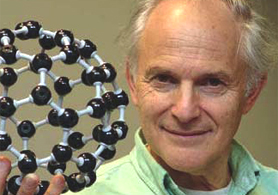

 In a
In a 







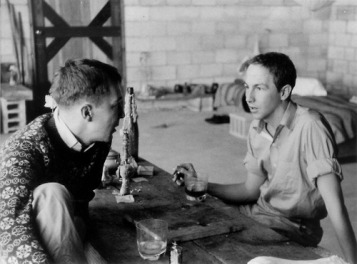
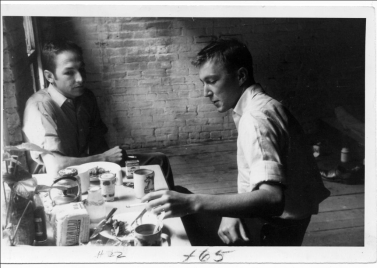











%202.jpg)

